VR APPS ONLINE!

With the development of several VR headsets in recent years, Virtual Reality has finally found its place in the entertainment world. With VR headsets for PCs, game consoles and smartphones, there are models out there for every budget.
When it comes to choosing one of the many available models, you have to take many aspects into account. Deciding which VR headset is best will depend on how you want to use it.
Here we show you the best VR headsets on the market in 2019!
Table of Contents
Virtual Reality – Something gamers have been dreaming of since the first generation was released in the early 80s. Films like Tron and numerous science fiction novels made the VR concept appealing to many gamers a long time ago.
For a long time, however, implementation seemed like a distant reality.
This is because complex technology is necessary to create a fully immersive experience. This only became available in recent years thanks to breakthroughs in processor performance and screen technology at affordable prices.
An immersive VR experience is only possible if you use the ability of human vision to simulate a real world. In order to be able to understand this from a technical perspective, it is necessary to visualize how the brain combines the information captured by the eyes into an optical image.
Humans can only see in 3D because they have two eyes. As the eyes are slightly offset, they capture the surroundings from slightly different angles. This fact is the basic prerequisite for three-dimensional vision.
In the brain, the images of different viewing angles are combined into a complete, spatial image, which gives us our three-dimensional vision. It’s called stereoscopic vision.
Virtual Reality makes use of this function of human vision: Both the left and right eye are each shown their own image on their own screen, which represents two slightly offset viewing angles of Virtual Reality. Just as the eyes would see a real room.
The brain then does the rest! Just as with real vision, the brain processes these two perspectives into a 3D field of vision, which enables us to experience the spatial environment.
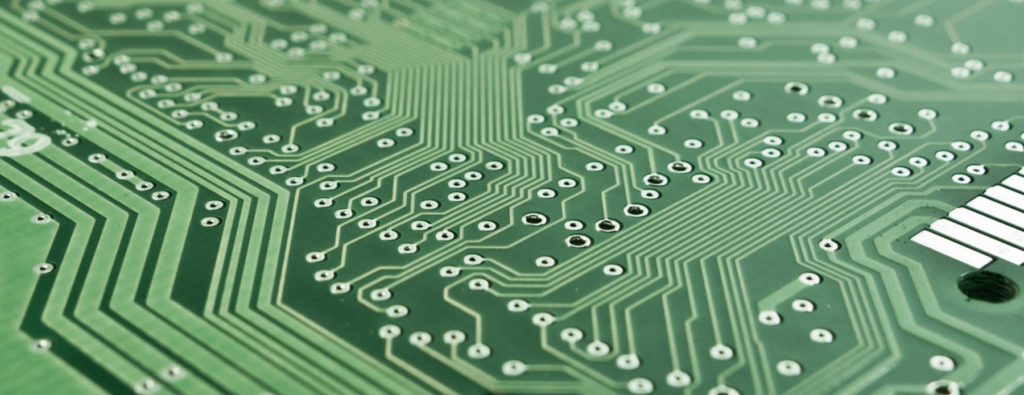
Depending on how high the resolution should be, a lot of computing power is required to generate these two images. Virtual Reality and VR headsets have only become a reality thanks to the rapidly improved computing power of PCs, consoles and smartphones in recent years:
In 2016, the first and long-awaited high-end VR headsets from Oculus and HTC were released.
There are some criteria for VR headsets that are crucial in determining the quality of the VR experience:
The goal of Virtual Reality is to create the perfect illusion of a virtual world. However, there is still a long way to go. One of the most important criteria for achieving the best possible results is getting the highest possible image resolution rate for VR headsets. This ensures that the world is presented as fluidly as possible. The image resolution rate of better VR headsets is usually between 60 and 120 Hz.
The resolution represented by the pixels or pixel density is important in order to produce as realistic a graphic as possible, as well as an image that is as unscreened and unpixelated as possible.
The resolution is listed per eye or overall and is usually between 1920×1200 (960×1200 per eye) and 2880×1600 (1920×1600 per eye) pixels on current devices.
The importance of the image transmission of VR headsets should not be underestimated. At the moment, HDMI cables are usually used. However, this restricts the player’s freedom of movement.
It goes without saying that VR headsets for smartphones can be used without such cables. However, the quality is much weaker for the PC than with a VR headset. In recent days, wireless variants for image transmission have also become available for the PC.
Wireless VR headsets are definitely the solution of the future as they provide the best user experience. At the moment, however, we still have to compromise on these solutions – be it in the form of high acquisition costs for solutions with PCs (if you don’t already own a powerful PC), or the weaker graphics of Virtual Reality headsets for the smartphone, or even standalone VR headsets.
The human field of vision is approximately 214 degrees horizontally and up to 150 degrees vertically. Normally, however, people tend to turn their heads rather than take full advantage of their entire field of vision.
For this reason, VR headsets already manage with a much smaller field of vision of up to 110 degrees.
Tracking is all about capturing the body/body parts of the player. This can be used for VR gaming as a control, or to locate the player in the virtual room.
Not all VR headsets are equipped with a tracking system, and the systems themselves differ from each other quite a bit. VR headsets for smartphones and standalone headsets don’t usually have tracking. An exception to this is the Oculus Quest, which does support tracking. On the other hand, VR headsets for PCs usually support tracking, and therefore offer a more complete experience.
In order to optimize the immersive experience as much as possible, the VR consumer should get as little as possible of the hardware once they start wearing a VR headset. The most important factor here is the weight, closely followed by the ergonomics of the headset.
VR headsets should not only be comfortable to wear, they must also sit securely in heated VR situations. And all this has to be achieved without getting tired or feeling pain when wearing a VR headset.
This is no small challenge, as the technology of VR headsets cannot be made easier without any side effects. The development of increasingly comfortable and light components will take time, and will certainly continue to improve with the coming generations of VR headsets.
The weight of a fully functional VR headset is usually somewhere between 380 and 600 grams. Virtual Reality headsets for the smartphone are much lighter. However, you also have to take into account the weight of the smartphone, which is attached directly to the headset and serves as a screen.
These are the most important criteria of VR headsets. Depending on the type of headset and the price, these can differ significantly from each other.
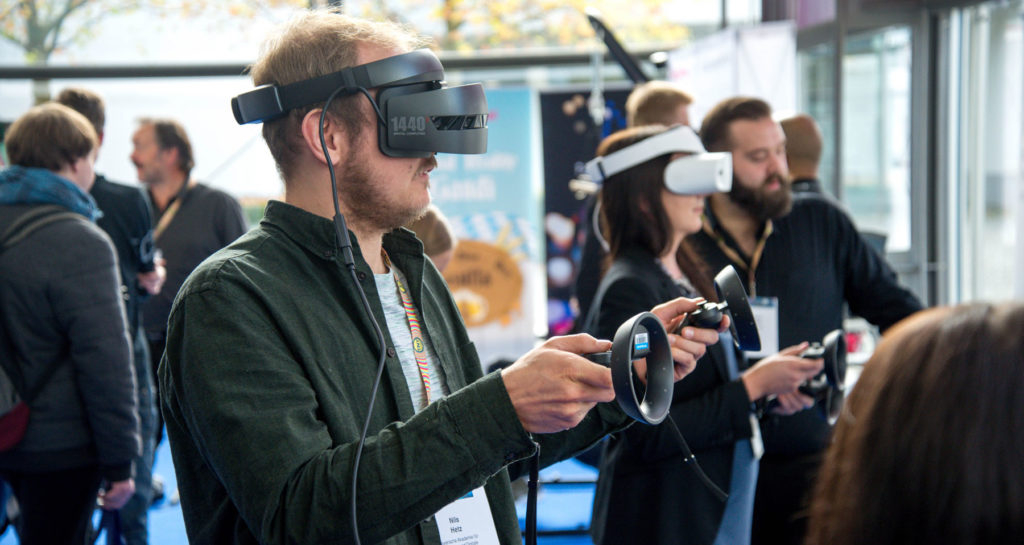
In 2016, mass-produced VR headsets with affordable prices came on the market for the first time, offering users an outstanding VR experience. There are 4 different types of VR headset:
The best experience in Virtual Reality can be achieved with a high-end headset. These usually have the best technical specifications. However, this is also reflected in the price. The rather expensive VR headsets for the PC also require as powerful a computer as possible in order to optimally display the VR worlds. Among the most famous models of VR headsets for PC are theValve Index, the Oculus Rift S and the HTC Vive Pro.
As expected, it also makes sense to use a VR headset when playing on a console. Up to now, there is only one serious VR headset for consoles on the market: Sony Playstation VR. There are no VR headsets available for the Xbox yet.
The cheapest and easiest way to experience VR is to use a VR headset that has been specially designed for smartphones. These are usually simple head mounts into which the smartphone is inserted. These serve as both a computer and a display. Two examples of successful VR headsets for smartphones are the Samsung Gear VR and the Google Daydream View.
There are also some VR headsets on the market that do not require a computer unit such as a PC, a console or a smartphone. These standalone VR devices have their own built-in chip.
The most prominent examples of standalone headsets are the Oculus Go, the Pico , the HTC Vive Cosmos and the Oculus Quest.
VR headsets are an exciting new way for the vast majority of users to experience virtual worlds in a more realistic manner. However, a VR headset is not suitable for everyone.
Many people wonder if they can use VR devices even though they have poor eyesight. The answer is: yes! Virtual Reality headsets can be used by almost all glasses wearers without any problems. This is because most VR headsets have their own focusing wheels, which enable the lenses to be adjusted as required.
Whether or not the adjustment is sufficient depends on the severity of the visual impairment. This is because the lenses of VR headsets are not quite as effective as those of optical glasses. High-end VR headsets also allow you to change the lens according to your visual acuity.
However, if you have a severe visual impairment, you will sometimes have to wear your optical glasses under the VR headset. This is also the case with less expensive VR headsets that do not allow the lenses to be replaced. Wearing glasses under a VR headset normally works without any issues. However, this can become uncomfortable over time, depending on the design. You also have to make sure that the headset fits exactly, as the focal point is reduced when wearing optical glasses. This means that the image may become blurred if the headset slips slightly.
If you have a visual impairment, you’ll encounter the least amount of problems if you wear contact lenses – as long as you can tolerate them.

You should exercise more caution when allowing children or young adults to use a VR headset. On Playstation VR, there is a note stating that children under the age of 12 should not be using it.
PlayStation boss Shuhei Yoshida has himself called for a new age rating system that will be adapted for VR games. The reason for this is that we know very little about the long-term effects that these very intensive VR experiences can have on both the body and mind.
The Oculus Rift has an age limit of 13 years. The safety information is as follows:
“…Prolonged use should be avoided as it may adversely affect hand and eye coordination, balance as well as your ability to multi-task.”
Although the HTC Vive doesn’t have a specified age limit, you should exercise the same caution with this VR headset.
Motion sickness or kinetosis is still a very common side effect of VR, caused by the release of stress hormones. This may be expressed in:
Motion sickness does not pose a long-term risk and usually subsides within a few hours. We spoke about this in our article: How To Create 360-Degree Videos.
The industry assumes that motion sickness will become increasingly rare as VR technology improves.
Due to a lack of data, it is not yet possible to estimate how high the addiction potential of Virtual Reality is. What is certain, however, is that conventional video games have the potential to be highly addictive. Due to the very immersive experience of VR, it wouldn’t be unlikely if the addiction potential of VR games were even higher.
Due to the very immersive experience you get in VR, it is not unlikely that the development of VR content will generate some negative headlines.
There is a large number of suitable VR headsets currently on the market. The decision regarding which VR headset is the right ones depends on what you want to do with it, on the technical possibilities and conditions and last but not least, on the price.
VR headsets are available in four different categories which we have already outlined. The average prices are different depending on the category. We have calculated them here for you:
In this category you will find the most technically sophisticated VR headsets. Accordingly, the prices are also the highest. In addition, you need powerful hardware to be able to use these VR headsets in an optimal way. Having compared numerous suppliers, we worked out that the average price is 510 euros. The cheapest set costs 419 euros. The most expensive model is the HTC Vive Pro for 719 euros.
If you want to enter the VR world but don’t want to spend too much, you can fall back on a solution for the smartphone. The smartphone is mounted into or on the headset for this. Having compared the numerous offers available, we found the average price to be just under 42 euros. The current cheapest model is the Hamswan 3D, which currently costs 24 euros, while the Samsung Gear VR currently costs 119 euros.
There’s not much choice at the moment when it comes to finding a VR headset for consoles. For the Playstation, the only option available is Playstation VR. Playstation VR is available for 190 euros.
Standalone VR headsets are still quite rare at the moment. Besides the two most important manufacturers Oculus (Go, Quest) and Pico (G2 4k), only Lenovo has so far brought a usable model onto the market with the Mirage Solo. Prices vary between 159 euros (Oculus Go) and 799 euros (HTC Vive Focus import) for standalone VR headsets.
To give you an overview of the numerous models, you will find the best VR headsets listed here.
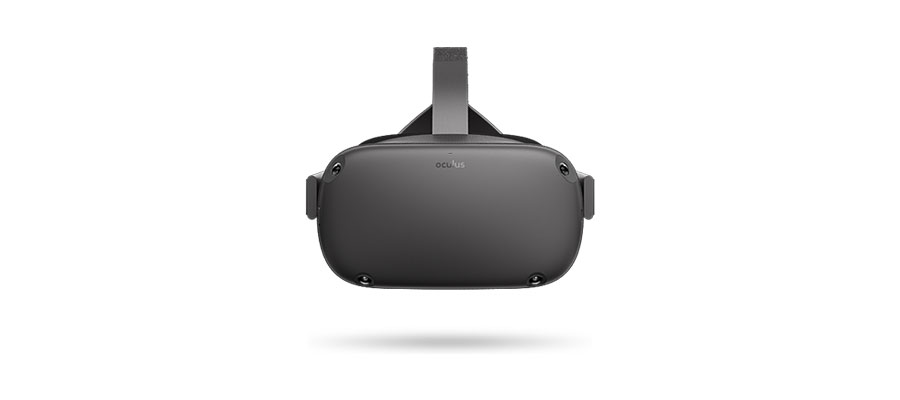
The Oculus Quest is the newest standalone headset from Oculus. This VR headset is for those looking for a wireless way to consume VR that does not require any additional hardware.
Special feature: The Quest has built-in tracking. Hardly any other provider currently offers this function.
The Oculus Quest’s major plus points are the controllers and large selection of games included in the package. The price is also quite reasonable. You can get a complete VR headset for just under 450 euros.

Pico was the first Chinese manufacturer to draw attention to itself in the VR world. Their first model, the Pico Neo, was the first standalone VR headset ever. The specifications of the Neo are most similar to the Oculus Go.
The successor model Pico G2 could pose a real threat to the Oculus Go. With 2880×1600 pixels at a frame rate of up to 90Hz and a camera for outward vision, the G2 has specs that outperform all other standalone headsets available so far. In addition, the G2 is extremely light, weighing just 268-278 grams.
However, the G2, which is available in three versions (G2, G2 Pro for even more performance, and G2 4K with extra high resolution), is not currently intended for the consumer market: The VR headsets produced by Pico are currently available exclusively for developers and business customers via the Pico website.

The Vive Focus from HTC does not require you to have a PC, base station or sensors. As soon as the device arrives, you can start immediately and enjoy VR in a 2880 x 1660 pixel resolution.
The sensors on the headset enable inside-out tracking, in which the room can be detected and your own position in the room can be determined. This allows the headset to adapt to the available space and no longer depends on the free space having to be a certain size.
If you are interested in the HTC Vive Focus, it is currently available for 693 euros.

The Oculus Go is a standalone VR headset, especially designed for the consumption of VR apps and 360-degree videos. In order to meet these requirements, much lower specifications are required than VR headsets designed for gaming. This also affects the price. Available for less than 200 euros, it is significantly cheaper than the Oculus Quest.
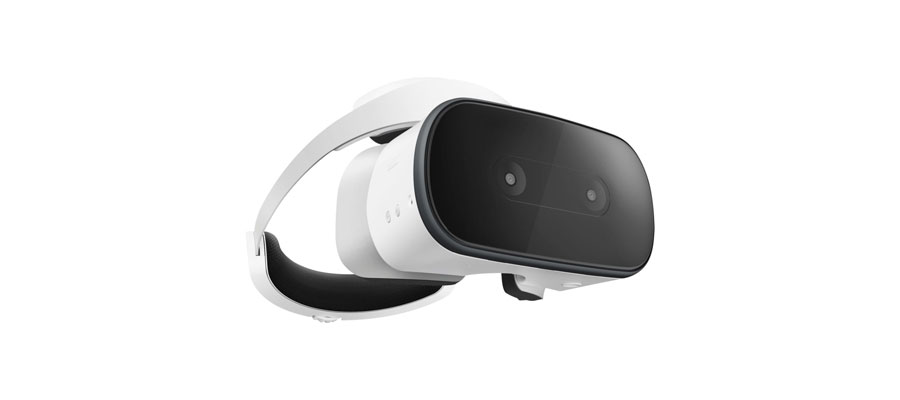
The Lenovo Mirage Solo only came on the market a little later than the Oculus Go. In terms of specifications, however, it is much closer to the more powerful Oculus Quest.
The reason for this is that Lenovo’s VR headset is also equipped with several cameras that allow tracking. Furthermore, the processor performance as well as the frame rate are significantly better than what the Oculus Go can provide. The Lenovo Mirage Solo is currently available for just over 400 euros.
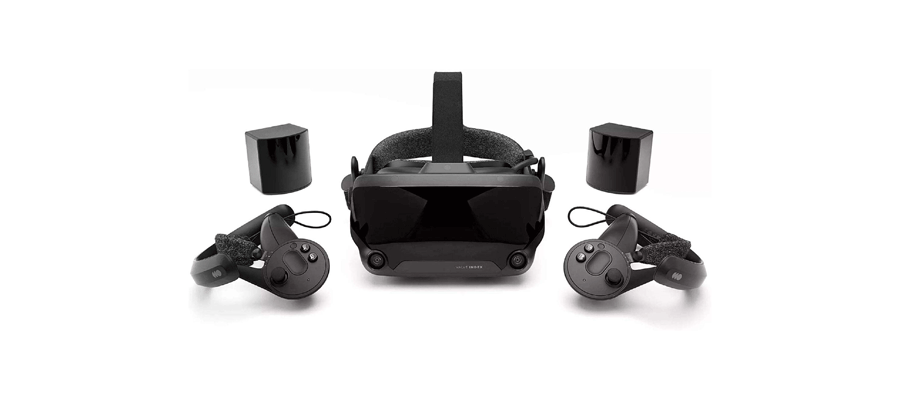
With the Valve Index, the software manufacturer Valve Corporation has launched a VR headset that is perfect for gaming. The two RGB – LCDs impress with 1440 x 1600 pixels each and offer a pin sharp picture. Higher frame rates and a low illumination duration also improve the appearance of the virtual content.
Valve also relies on an ergonomic headset that can be comfortably worn for several hours. For example, the headphones no longer sit directly on the head, which reduces the pressure on the ears. The headset is well padded and can be individually adjusted to each head. The built-in lenses maximise the field of vision and can also be individually adapted to the eyes.
If you’re looking for a high-quality headset that you can comfortably play with for several hours, you should definitely take a look at the Valve Index. Currently, the Valve Index with controllers costs 800 euros.
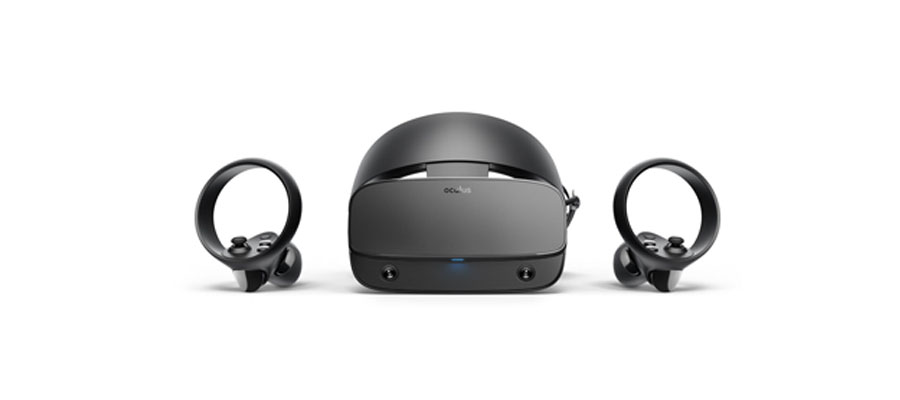
The Oculus Rift S is the improved successor of the Oculus Rift – the VR headset that ushered in the age of Virtual Reality alongside HTC Vive. This is a high-end device and is one of the most technically sophisticated models.
Both in terms of pixel density and image change rate, the Rift S is among the best devices currently available on the market. Oculus, a subsidiary of Facebook, has done a great job of making the experience as perfect as possible for VR users with a real interest in gaming.
This VRheadset is intended for all those looking for the most comprehensive experience possible, especially while playing games. Please remember, however, that you will need a powerful PC in order to use the Oculus Rift S to its full potential.

By developing the HTC Vive Pro,HTC, as a premium manufacturer of VR headsets, has once again gone one better. With outstanding specifications that are unmatched in the VR headset sector, the South Korean company is setting new standards and is also targeting business customers.
Among the consumer VR headsets, it has the highest pixel density (615 ppi) with 2880×1600 pixels. Another feature unmatched by other headsets is a possible tracking range of up to 100 square meters, which is covered by four sensors.
These features make the HTC Vive Pro the best equipped VR headset, but also the most expensive. The HTC Vive Pro currently costs just over 700 euros.
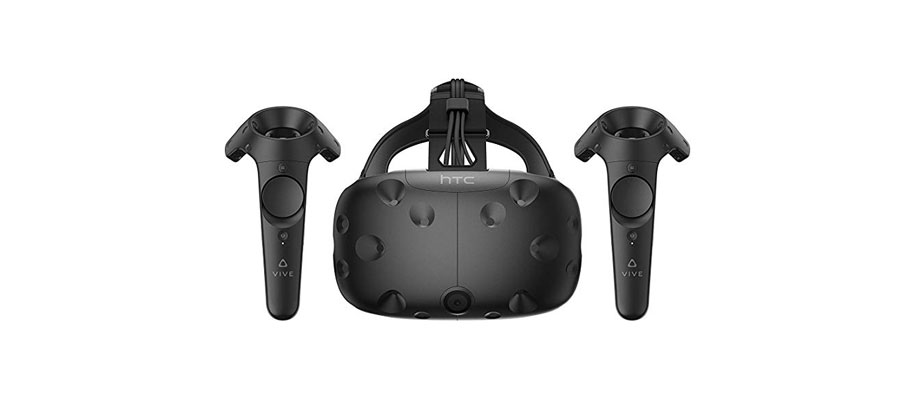
The HTC Vive was one of the first high-end VR headsets on the market alongside the Oculus Rift. The Vive has similar specifications to the Oculus Rift, but is about 100 grams heavier. It is aimed at users who want to experience VR intensively and who either own or are willing to invest in a PC with high performance.
The HTC Vive comes with two controllers and room sensors that allow the player to move around in the VR world. The HTC Vive also has an extensive ecosystem, which contains numerous VR games on the steam platform.
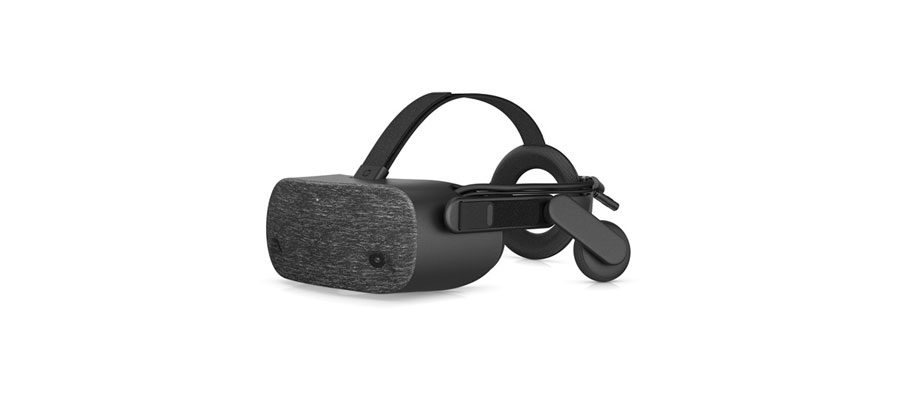
For the HP Reverb, HP primarily relies on a VR headset that convinces with better resolution. The headset has 2160 x 2160 pixels on each side, which marks a significant difference to the first generation VR headsets.
The VR headset from HP is also very light and offers various options for adjusting the headset to the head. Both headphones can be detached as well as adjusted and have an integrated surround sound. Two integrated microphones and the corresponding intelligent assistant should simplify communication.
The HP Reverb is currently considered the best mixed reality headset for Windows and costs almost 700 euros.

With the Vive Cosmos, HTC has announced the next generation of VR headsets. This standalone VR headset is equipped with 6 cameras, which are used for tracking and should make playing possible in any environment. The design also promises an improved fit to allow longer play. Practical feature: The Vive Cosmos makes it possible to easily fold the screens upwards to quickly allow a free field of view into the real world if necessary.
The Vive Cosmos can be connected to a PC as well as to a smartphone, and also works independently. So if you are looking for a high-end solution that works without cables, you might also want to take a look at the HTC Vive Cosmos.

The Samsung Gear VR is one of the cheapest and best options on the market if you are lookng for an entry-level VR device. The Samsung Gear VR is relatively comfortable to wear and comes with a sophisticated controller. The Samsung Gear VR is now compatible with some Samsung smartphones that have been released in recent years.
This model is recommended for anyone with a Samsung smartphone who is looking for a cheap way to experience Virtual Reality.
Attention: The Samsung Gear VR will no longer be supported by Oculus. This means that old apps will still work, but because of the development stop there will be no new apps.

The Google Daydream View is the counterpart to the Samsung Gear VR for all users of Google Pixel phones, as well as some phones from other manufacturers. The VR headset produced by Google is a little more expensive than the Samsung solution, but it is still one of the cheapest available VR headsets for the smartphone on the market that offers at least decent quality.
The biggest advantage of the Google Daydream View is the integrated YouTube app, which allows you to consume 360-degree videos in a very simple and intuitive way.
Attention: The Google Daydream is being stopped. This means that the headset is no longer sold by Google. The associated platform will remain available for the owners of Google Daydream, but there will be no new apps for it.

With Playstation VR, Sony has come up with a powerful response to the VR headset produced by the two premium manufacturers Oculus and HTC. Although Playstation VR cannot quite keep pace with the specifications of the Oculus Rift S or the HTC Vive, it does have the advantage that it has been optimized for use with the Playstation 4. It is significantly cheaper than the competition and offers a very simple plug-and-play setup. The selection of games and content is also quite substantial.
However, Playstation VR does lack some features such as the tracking solution available on Oculus and HTC headsets. In addition, Playstation VR is slightly heavier than the competition. Overall, Playstation VR is a good investment for those who already own a Playstation 4.
Did we forget some important headsets? Do you have experience with any of the VR headsets listed here? Help our readers by sharing your personal experience with one or more of the models. We look forward to hearing from you!
Register for free and start editing!